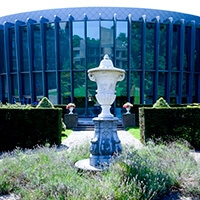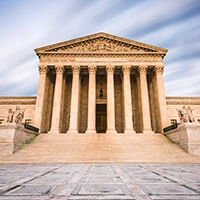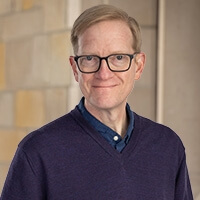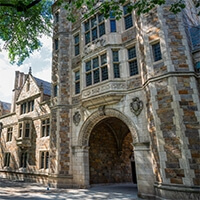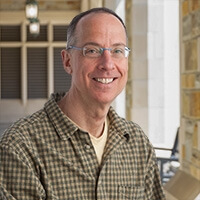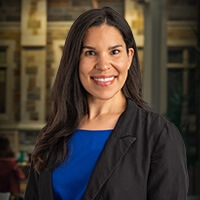Minnesota Supreme Court Justice Anne McKeig has found success in life and career by always staying true to who she is and where she came from.
“Sometimes we feel like we have to fit in, and I think that’s just not true,” said Justice McKeig, a descendant of the White Earth Nation of Ojibwe and the first Indigenous woman to be a state supreme court justice. “I have really fought hard to keep who I am and how I am, because I don’t fit into the mold.”
Justice McKeig spoke as part of a meeting of the Michigan Tribal State Federal Judicial Forum that took place at the Law School and the Washtenaw County Courthouse earlier this month. Her talk was co-sponsored by the Native American Law Students Association.

Growing up in the tiny town of Federal Dam, Minnesota, Justice McKeig experienced culture shock when she went to the Twin Cities for college, and again upon entering law school at Hamline University.
“My dad always said, ‘You better have one foot in the concrete of Federal Dam. Don’t forget where you came from.’ I thought that was some of the best advice that I could have ever been given,” she said.
Initially working as a lawyer in juvenile court, in 2008 Justice McKeig successfully applied for an opening as a county judge—partly inspired by the example of her mentor, Judge Robert Blaeser, the first Native American judge in the Twin Cities.
“He let me know that it’s okay to just be myself,” she said.
Judge Blaeser encouraged her to apply for an opening on the Minnesota Supreme Court in 2016, and she was appointed by Gov. Mark Dayton—the first Native American in such a role.
“I thought about the Indian community—Is everybody going to be okay with the fact that I’m the first? That’s a huge responsibility,” she said. “I was very nervous. But I called Judge Blaeser and he started crying. And I thought, this is going to be okay. This was meant to be, and it’s important that I do this.”
Justice McKeig related that she brought an informality and real-world grounding to the court that wasn’t always welcome among some of her colleagues.
“I am not the intellectual that my colleagues are,” she said. “I’m trying to learn how to accept that I may have a different role, a different voice, on the court, and that’s not always easy. But I think you do have to accept that about yourself, accept the good things, but also accept the challenges and know that that’s what makes us each unique.”
Eight years later, Justice McKeig is now the second-most-senior member of the court.
“I get to hopefully inspire somebody to think that they can do something that they want to do, even if others think that they can’t,” she said. “You don’t have to be like everybody else.”
Matthew L.M. Fletcher, ’97—the Harry Burns Hutchins Collegiate Professor of Law and Co-director of the Program in Race, Law, and History—participated in the forum meetings and introduced Justice McKeig’s talk.
“The forum takes seriously the part of its mandate to both educate and be educated,” he said. “Bringing Justice McKeig to campus allows forum members to learn more about tribal relations in other states, and doing so at the Law School allows our students to benefit as well. Justice McKeig was one of the most down-to-earth and inspiring speakers I’ve ever seen on campus.”
In addition to Justice McKeig’s talk, other sessions at the Tribal State Federal Judicial Forum’s two-day meeting included a presentation on peacemaking by Washtenaw Circuit Judge Timothy Connors, a Michigan Law lecturer and past forum co-chair; an update on grant opportunities; and various committee assignments and reports.
“The forum meeting at the Law School was a great success,” said Mason County Circuit Judge Jeff Nellis, co-chair of the forum. He said the meetings featured productive discussions on how the various jurisdictions can cooperate on shared issues and interests. “The forum helps us know that we can work together to solve problems.”
Forum participant and Michigan Supreme Court Justice Megan Cavanagh added, “Meetings of the forum are so important because the interaction at the table is both productive and symbolic of the vital interactions that must take place every day between our respective courts that affect the lives of the people we serve. In particular, I am so impressed with the work done on the 1L handbook, Anishinaabe Law, that was released at the meeting. Students and practitioners will find this handbook to be an essential guide to Native American Law.”
Created in 2014, the forum is designed to bring together judges from all three jurisdictions to improve communication and working relations. It addresses issues such as the Indian Child Welfare Act, lawyer discipline, and cooperation between justice systems.


